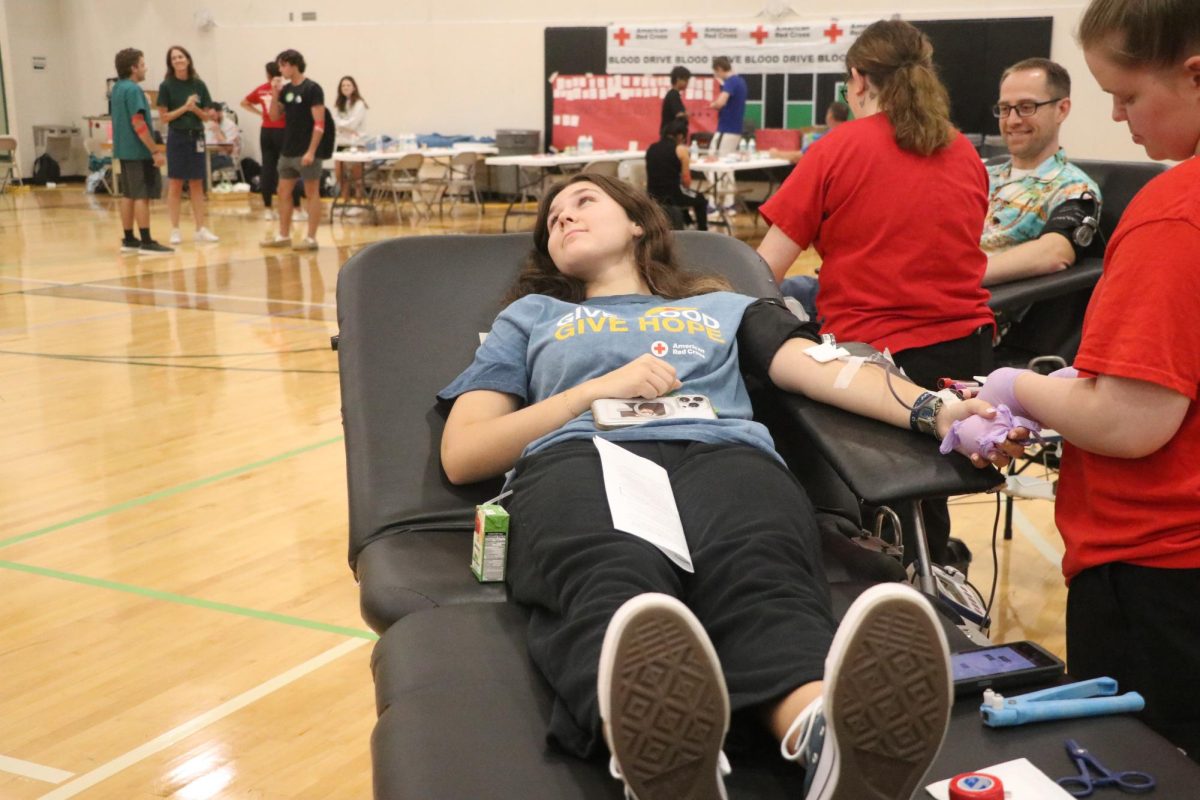A few weeks ago, Millard West hosted their annual HOSA blood drive. For some, it was their first time donating blood. For others, this is something they’ve done multiple times because the benefits of donating blood are so prevalent.
Blood drives are hosted at places such as schools, libraries and The Red Cross. Not only that, but at any time, you can schedule an appointment. For those worried about the time, fear not because donating blood only takes about 8-10 minutes, according to The Red Cross. After the procedure, you’ll be taken to a room to rest for about 10-15 minutes and will be given a snack and drink. All while knowing you saved lives.
I think it’s nice having these rooms to rest after donating blood. It can be a very scary, albeit rewarding, experience. For some people, having a place where you get some food and drinks is a nice reward. Though, the true reward is saving lives. I know if I were to donate blood, I would want somewhere to rest too, donating blood is a very brave thing to do.
Just one donation of blood can save up to three lives. Most blood donations take about a pint of blood, or just above a pound. People with rarer blood types are encouraged to donate more in case of patients who need blood, but have rarer blood types. Type O-Negative donors especially are encouraged to donate since their blood can be transferred to anyone, but supply of it is low, according to Cedars Sinai.
It may come as a surprise to learn that donating blood is a very healthy thing to do and will prevent arterial blockages, according to oneblood.org. On top of this, men who donate blood at least three times a year greatly reduce their chances of getting a heart attack or stroke. I didn’t know this fact myself, I think if this fact was shared more when promoting blood drives, more people would donate blood.
Blood donations aren’t the only things that could help save lives, donating plasma is also a huge way to help. The process of donating plasma is very similar to donating blood, a needle will be inserted into a vein in your arm, and the pain is similar to a mild bee sting. The only difference is that the verification process takes a bit longer, as well as the process of donating the plasma itself, which takes about two hours. According to donatingplasma.org, “All individuals must pass two separate medical examinations, a medical history screening and testing for transmissible viruses, before their donated plasma can be used to manufacture plasma protein therapies.”
According to the Red Cross, people who need plasma donations most are “Individuals who experience a severe trauma, burn or shock often lose a significant amount of blood volume, and are depleted of many necessary electrolytes.” The best type of plasma donors are people who have type AB+ or AB- blood. The only issue is that only 4% of the population have this type of blood, making plasma donations rare.
With all this in mind, I think donating blood and / or plasma is a no-brainer. You’ll be saving multiple lives by giving people with diseases the necessary blood they need to survive. You will also be potentially saving your own life by reducing the chances of getting a heart attack or stroke. The Red Cross offers blood and plasma donations at any time, with an appointment. Schools and other places also host blood drives regularly, so there are many opportunities to donate blood when it’s most convenient for you. Donate some blood today to save lives before it’s too late.









